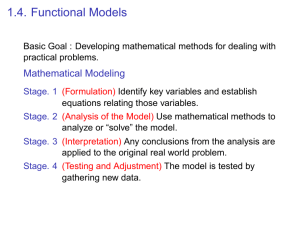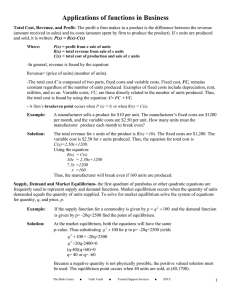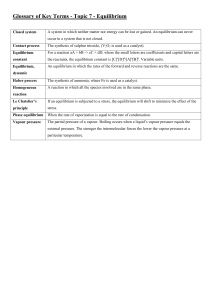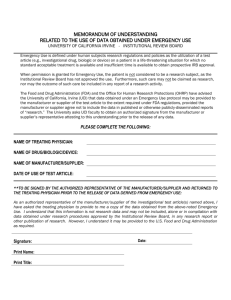Abstract - NUS Business School
advertisement
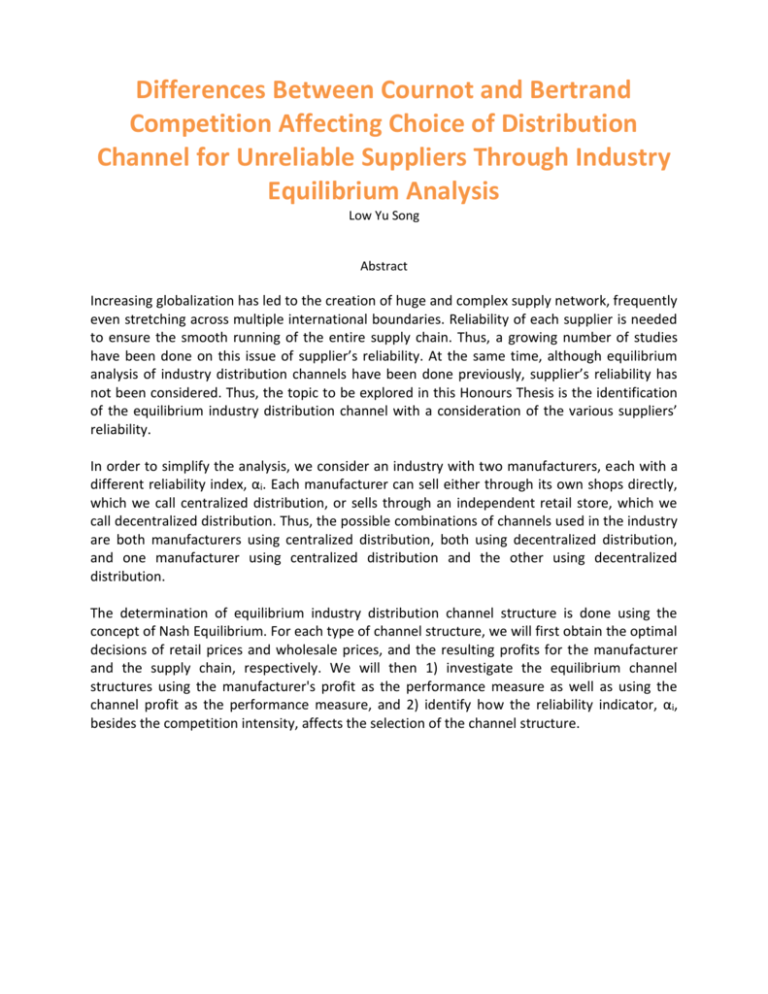
Differences Between Cournot and Bertrand Competition Affecting Choice of Distribution Channel for Unreliable Suppliers Through Industry Equilibrium Analysis Low Yu Song Abstract Increasing globalization has led to the creation of huge and complex supply network, frequently even stretching across multiple international boundaries. Reliability of each supplier is needed to ensure the smooth running of the entire supply chain. Thus, a growing number of studies have been done on this issue of supplier’s reliability. At the same time, although equilibrium analysis of industry distribution channels have been done previously, supplier’s reliability has not been considered. Thus, the topic to be explored in this Honours Thesis is the identification of the equilibrium industry distribution channel with a consideration of the various suppliers’ reliability. In order to simplify the analysis, we consider an industry with two manufacturers, each with a different reliability index, αi. Each manufacturer can sell either through its own shops directly, which we call centralized distribution, or sells through an independent retail store, which we call decentralized distribution. Thus, the possible combinations of channels used in the industry are both manufacturers using centralized distribution, both using decentralized distribution, and one manufacturer using centralized distribution and the other using decentralized distribution. The determination of equilibrium industry distribution channel structure is done using the concept of Nash Equilibrium. For each type of channel structure, we will first obtain the optimal decisions of retail prices and wholesale prices, and the resulting profits for the manufacturer and the supply chain, respectively. We will then 1) investigate the equilibrium channel structures using the manufacturer's profit as the performance measure as well as using the channel profit as the performance measure, and 2) identify how the reliability indicator, αi, besides the competition intensity, affects the selection of the channel structure.
